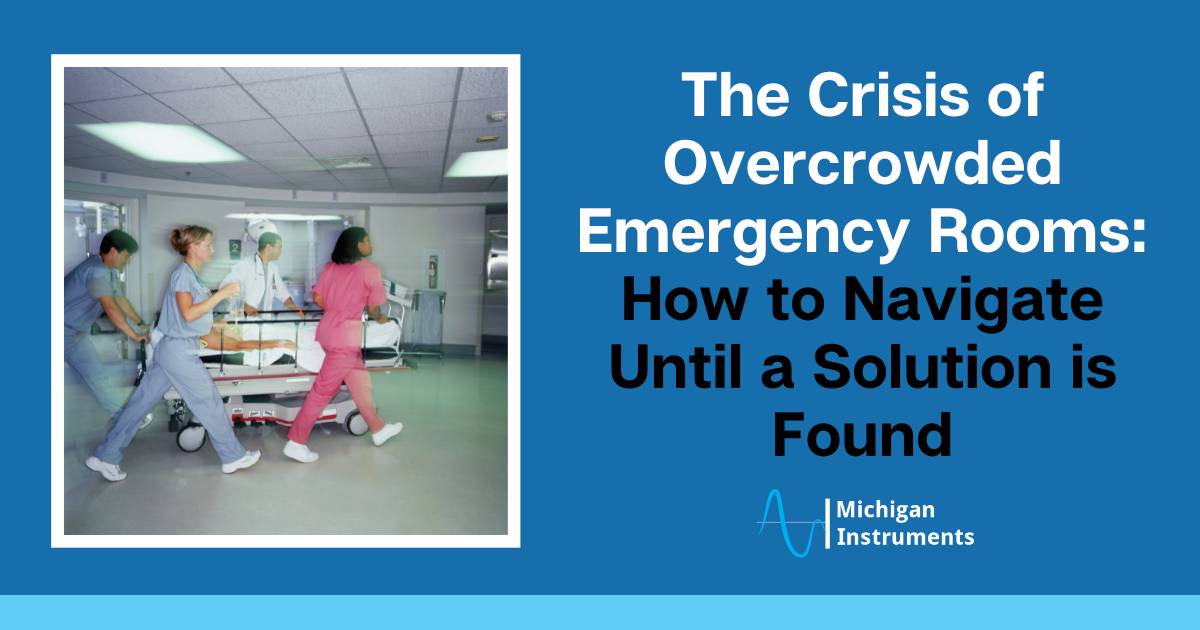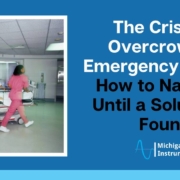
Emergency rooms (ERs) are designed to provide immediate medical attention to patients in emergency situations. However, the demand for emergency medical services continues to increase, leading to emergency room crowding all over the country.
This has resulted in very long wait times and possible delayed treatment. In fact, a recent study found that over 90% of US emergency departments report overcrowding to be a problem, and nearly 40% reported that overcrowding occurs daily.
Below, we discuss how to navigate and manage overcrowded ERs until a national solution is found.
What Causes Overcrowded Emergency Rooms?
In order to assess possible solutions to the issue of overcrowded emergency rooms, we need to understand the causes.
The overcrowding of emergency rooms is caused by various factors, such as:
- Utilizing the ER as a primary care provider: Many people use the ER as their primary care provider because they either don’t have access to primary care physicians or aren’t able to afford one.
- Aging population: As the population ages, the demand for emergency medical services increases.
- Chronic diseases: The effects of chronic diseases, such as diabetes and heart disease, may require more frequent emergency room visits.
- Mental health services: Patients that experience mental health issues often use the emergency room as an attempt to get immediate help.
Effects of Overcrowded Emergency Rooms
Overcrowded ERs can have significant effects on patient care, including, but not limited to:
- Longer wait times: Patients may wait a long time before receiving medical attention. In some cases, this can delay treatment and patients may experience pain for a long time.
- Increased risk of medical errors: When Emergency Rooms are overwhelmed, medical staff may be rushing or reacting quickly. This can lead to the possibility of medical errors.
- Reduced quality of care: Overcrowding can lead to medical staff not being able to offer enough time to provide higher quality care before they have to move on to the next patient.
How to Manage a Crowded ER
While various solutions are being proposed to address the national crisis of overloaded ERs, hospitals can both manage and navigate the situation in the meantime using the following solutions:
1. Offer Options to “Non-Emergency” Patients
A lot of the time, ERs get congested with patients who may not require immediate attention.
To combat this issue, consider implementing a system where your staff kindly asks those patients to either wait until patients with urgent needs have been helped, or refer them to other facilities such as a nearby or on-site urgent care clinic.
It may be difficult to defer the patient that does not require emergency treatment, or delay treatment, but in reality, emergency rooms are built for true, life-threatening emergencies.
2. Communicate With Other ER Staff
Another solution is perhaps one of the most important aspects of any successful workplace: concise, clear communication.
This is especially important in environments like an ER where time is valuable. The staff is moving quickly, and everyone involved has to think fast while also providing the best care.
Concise communication with nurses, clerical staff, and other doctors can assist with treating ER patients in a more efficient way. If there is poor communication in your emergency department, assess the situation to create a more productive system.
3. Smart Time Management
Consider the way your staff manages their time. For example, how are you spending time during periods when the ER is slow? While it may be smart to play catch-up during these times, don’t forget that it’s also vital for your staff to take care of themselves.
When they get a break, encourage them to sit down, have a snack, hydrate, or just relax.
During a slower time, it may also be beneficial to review both a patient’s history and previously gathered information. Some patients shouldn’t be seen without reviewing any history and/or notes that may have been recorded. Your medical staff should be aware of this information before they are treated.
4. Utilize Smart Medical Equipment That Acts Quickly and Efficiently
Working in a fast-paced environment like an Emergency Room is very physically demanding, and requires a lot of long and strenuous hours.
Investing in equipment for your department helps your staff…
- Reduce the physical strain on their bodies
- Maintain their energy longer; thus having the physical and mental capacity to give patients better care, faster.
We provide superior medical devices that can assist your ER staff in emergency scenarios – our automated CPR machines. Our Life-Stat and Thumper CPR devices are lightweight and easy to use when patients are in cardiac arrest.
They offer many advantages in an emergency room setting including quick set-up, the option to include ventilation with chest compressions, and most importantly, hands-free operation. That way, emergency physicians have the ability to focus on other life-saving measures.
There’s a reason why so many healthcare facilities across the country (and the world) use our devices. They’re a tried and true, one-of-a-kind solution during cardiac arrest; they help calm the situation and add an “extra set of hands.”
Learn More About How Our Devices Can Assist With Emergency Room Crowding
If your hospital is burdened with the stress of emergency room crowding and limited time and resources with the patients, take action with our revolutionary devices that will save your staff time and energy.
Our dedicated team has developed and maintained life-saving and research driven devices for over seven decades now, with no plans to stop anytime soon. Contact us today to request a free quote or learn more about our devices!




